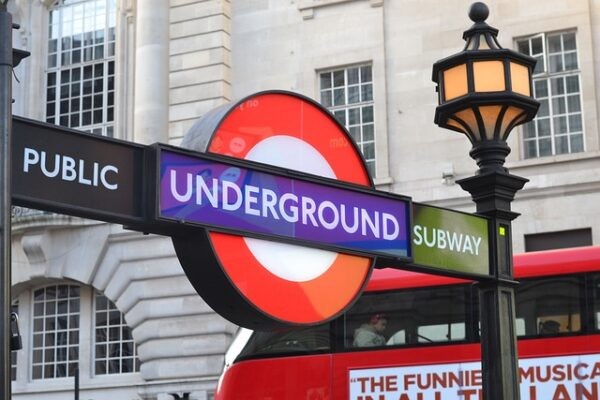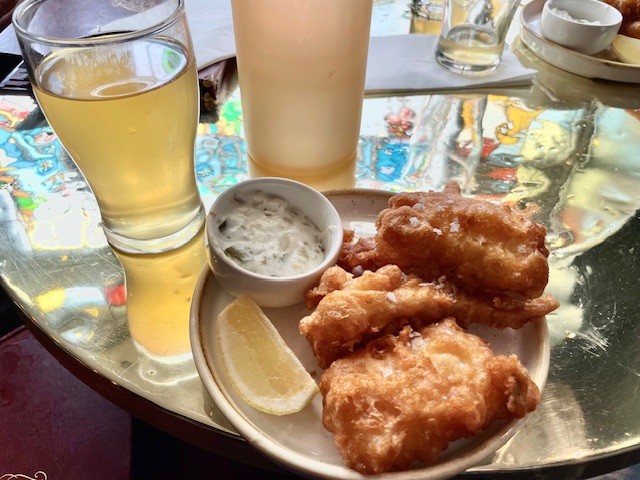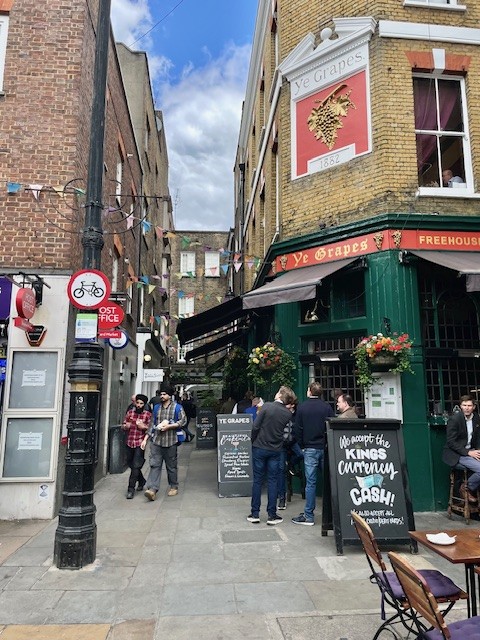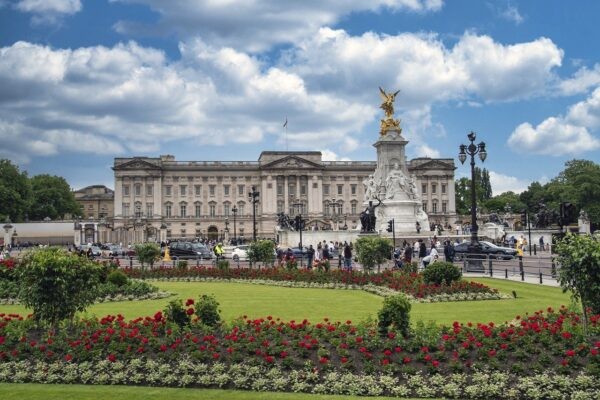Are you dreaming of exploring London but feeling overwhelmed by the planning process? SIXT.VN understands that planning a London adventure can be daunting, especially for first-timers. That’s why we’re here to provide you with a comprehensive London Travel guide, offering expert advice, insider tips, and seamless travel solutions to make your trip unforgettable. Discover the best of the UK’s vibrant capital with ease, from iconic landmarks to hidden gems, all while enjoying hassle-free travel arrangements.
1. What is the Best Time to Visit London?
The best time to visit London is during the shoulder seasons—spring (April-May) and autumn (September-October)—for pleasant weather and fewer crowds. Summer (June-August) offers the warmest weather but attracts the largest crowds, while winter (November-March) can be chilly with shorter daylight hours.
- Spring (April-May): This season offers blooming gardens, mild temperatures, and fewer tourists compared to summer. It’s perfect for exploring parks and outdoor attractions.
- Summer (June-August): The warmest months are ideal for outdoor activities, but be prepared for higher prices and crowded attractions.
- Autumn (September-October): Enjoy crisp air, colorful foliage, and fewer crowds. Many cultural events and festivals take place during this time.
- Winter (November-March): While it can be cold and wet, London’s winter charm includes festive Christmas markets and cozy pubs. Just be prepared for shorter days.
According to Visit Britain, the shoulder seasons offer a balance between favorable weather and manageable tourist levels, making them ideal for a visit.
2. How to Navigate London’s Language and Culture?
While English is spoken in London, understanding local slang and cultural nuances can enhance your travel experience. Familiarize yourself with common phrases, be aware of British etiquette, and embrace the city’s diverse cultural scene.
- Local Slang: Learn a few common British phrases like “cheers” (thank you), “loo” (toilet), and “tube” (subway).
- Etiquette: Be mindful of queuing etiquette, avoid loud phone conversations on public transport, and tip appropriately in restaurants and taxis.
- Cultural Norms: Embrace the city’s diverse cultural scene by visiting local markets, attending theater performances, and trying traditional British cuisine.
Research from the British Council highlights the importance of understanding cultural context in effective communication, which can greatly improve your travel experience.
3. What to Wear in London?
London’s weather is famously unpredictable, so layering is key. Pack versatile clothing items that can be easily mixed and matched to adapt to changing conditions.
- Layering: Start with a base layer of moisture-wicking fabric, add a sweater or fleece for warmth, and top it off with a waterproof jacket.
- Footwear: Comfortable walking shoes are a must, as you’ll likely be doing a lot of walking. Consider waterproof boots for rainy days.
- Accessories: Don’t forget a scarf, hat, and gloves for colder months, and sunglasses for sunny days.
As noted by the UK Met Office, London’s weather can change rapidly, so it’s always best to be prepared for all possibilities.
4. What Are the Best Transportation Options in London?
London boasts an excellent public transportation system, making it easy to get around the city. The Underground (Tube), buses, trains, and trams are all efficient and affordable options.
- The Underground (Tube): The fastest way to travel long distances. Use an Oyster card or contactless payment for the best fares.
- Buses: An extensive network of buses covers the entire city. A great way to see the sights while getting from A to B.
- Trains: National Rail services connect London to other parts of the UK. Ideal for day trips and exploring beyond the city limits.
- Trams: Serve specific areas of South London. Useful for local travel within these zones.
Transport for London (TfL) provides comprehensive information on all public transportation options, including maps, fares, and real-time updates.
 London Underground Sign
London Underground Sign
5. Do I Need an Oyster Card in London?
While not strictly necessary, an Oyster card can be convenient and cost-effective for frequent travelers. Contactless payment with a credit or debit card is also widely accepted on public transportation.
- Oyster Card: A reusable smart card that you can top up with credit. Offers discounted fares on most forms of public transport.
- Contactless Payment: Use your credit or debit card to tap in and out at ticket barriers. Fares are capped daily and weekly.
- Travelcard: A paper ticket that allows unlimited travel within specific zones for a set period. May be a good option for tourists staying in central London.
According to TfL, contactless payment and Oyster cards offer the same fares, so choose the option that best suits your needs.
6. What are the Must-Try Foods and Drinks in London?
London’s culinary scene is incredibly diverse, but there are some classic British dishes that you simply must try. From traditional pub fare to afternoon tea, here are some highlights:
- Fish and Chips: Crispy battered fish served with chunky chips (fries). A quintessential British meal.
- Sunday Roast: A hearty meal consisting of roasted meat, vegetables, Yorkshire pudding, and gravy.
- Afternoon Tea: A luxurious treat featuring sandwiches, scones, pastries, and a selection of teas.
- Full English Breakfast: A substantial breakfast with bacon, sausages, eggs, beans, tomatoes, mushrooms, and toast.
The Michelin Guide highlights London’s growing number of Michelin-starred restaurants, reflecting the city’s increasingly sophisticated food scene.
 Fish & chips and beer London travel tips
Fish & chips and beer London travel tips
7. What Are the Must-See Attractions for First-Time Visitors?
London is packed with iconic landmarks and attractions, so it can be hard to know where to start. Here are some of the top sights for first-time visitors:
- The Tower of London: A historic castle with a rich and often gruesome past. Home to the Crown Jewels.
- Buckingham Palace: The official residence of the Queen. Witness the Changing of the Guard ceremony.
- Big Ben & Houses of Parliament: An iconic clock tower and the seat of British government.
- Westminster Abbey: A stunning Gothic church that has been the site of royal coronations for centuries.
- The London Eye: A giant Ferris wheel offering panoramic views of the city.
UNESCO recognizes several of London’s landmarks as World Heritage Sites, underscoring their historical and cultural significance.
8. Where to Find Unique and Offbeat Places in London?
Beyond the main tourist attractions, London has many hidden gems and quirky places to discover. Here are a few ideas:
- Borough Market: A vibrant food market with stalls selling everything from artisanal cheeses to international street food.
- Neal’s Yard: A colorful courtyard in Covent Garden with independent shops and cafes.
- Little Venice: A tranquil canal-side neighborhood with houseboats and waterside cafes.
- Shepherd Market: A charming village-like area in Mayfair with boutiques, pubs, and restaurants.
Time Out London features a regularly updated list of unique and offbeat places to visit, ensuring you’re always in the know.
 street and restaurants in London Sheperd Market
street and restaurants in London Sheperd Market
9. What’s the Best Area to Stay in London?
Choosing the right neighborhood to stay in can make a big difference to your London experience. Consider your budget, interests, and travel style when making your decision.
- Mayfair: An upscale area with luxury hotels, designer shops, and fine dining restaurants.
- West End: The heart of London’s theater district, with easy access to major attractions.
- South Bank: A vibrant cultural hub with museums, galleries, and riverside views.
- Notting Hill: A trendy neighborhood with colorful houses, vintage shops, and the famous Portobello Road Market.
According to TripAdvisor, the West End and South Bank are popular choices for tourists due to their central location and abundance of attractions.
10. Are There Any Day Trips to Take from London?
London is a great base for exploring other parts of the UK. Here are some popular day trip destinations:
- Bath: A historic city with Roman baths and Georgian architecture.
- Stonehenge: An ancient stone circle shrouded in mystery.
- Oxford: A charming university city with stunning architecture and historic colleges.
- The Cotswolds: A picturesque region with rolling hills, charming villages, and traditional pubs.
The National Trust offers information on many of the historic sites and natural landscapes that can be visited on a day trip from London.
 cloudy skies in London for First Time Visitors
cloudy skies in London for First Time Visitors
11. How to Manage Currency and Payments in London?
London is largely a cashless city, so credit and debit cards are widely accepted. However, it’s always a good idea to have some cash on hand for smaller transactions and tips.
- Credit and Debit Cards: Visa and Mastercard are widely accepted. Check with your bank about international transaction fees.
- Cash: Useful for tipping, small purchases, and in case of emergencies.
- Currency Exchange: Exchange currency at banks, post offices, or currency exchange bureaus.
According to UK Finance, contactless payments account for a large percentage of transactions in London, making it one of the most cashless cities in the world.
12. What Travel Essentials Should I Pack for London?
Packing the right travel essentials can make your trip to London much more comfortable and convenient. Here are some must-have items:
- Passport: Ensure your passport is valid for at least six months beyond your travel dates.
- Travel Adapter: The UK uses a different plug type than many other countries.
- Comfortable Walking Shoes: You’ll be doing a lot of walking, so comfortable shoes are essential.
- Rain Gear: A waterproof jacket and umbrella are a must for London’s unpredictable weather.
The Foreign and Commonwealth Office provides travel advice and information for British citizens traveling abroad, including passport and visa requirements.
13. How to Get From the Airport to Central London?
London has several major airports, each with its own transportation options to the city center.
- Heathrow Airport: The Heathrow Express train is the fastest way to Paddington Station. The Underground (Piccadilly Line) is a cheaper but slower option.
- Gatwick Airport: The Gatwick Express train runs directly to Victoria Station. Southern and Thameslink trains also serve Gatwick.
- Stansted Airport: The Stansted Express train goes to Liverpool Street Station.
- Luton Airport: Thameslink trains connect Luton Airport Parkway Station to central London.
Each airport’s official website provides detailed information on transportation options, including timetables, fares, and booking information.
14. What is the Etiquette for Tipping in London?
Tipping is customary in London, but it’s not always required. Here are some general guidelines:
- Restaurants: A service charge of 12.5-15% is often added to the bill. If not, it’s customary to tip 10-15% for good service.
- Taxis: Tip 10-15% of the fare.
- Hotels: Tip porters £1-£2 per bag.
- Pubs: Tipping is not customary at pubs.
As noted by Visit London, tipping practices can vary, so it’s always best to check whether a service charge is already included.
15. How to Stay Safe in London?
London is generally a safe city, but it’s important to be aware of your surroundings and take precautions against petty crime.
- Be Aware of Your Belongings: Keep your valuables close and be vigilant in crowded areas.
- Use Licensed Taxis: Only use licensed taxis or reputable ride-sharing services.
- Avoid Walking Alone at Night: Stick to well-lit areas and avoid walking alone late at night.
- Emergency Services: In case of emergency, dial 999 for police, fire, or ambulance.
The Metropolitan Police provides safety tips and advice for visitors to London, including information on common scams and how to report crime.
16. What are Some Popular Events and Festivals in London?
London hosts a wide range of events and festivals throughout the year. Here are a few highlights:
- Notting Hill Carnival: A vibrant street carnival celebrating Caribbean culture (August).
- Trooping the Colour: A military parade marking the Queen’s official birthday (June).
- Wimbledon: The world’s oldest tennis tournament (June-July).
- Christmas Markets: Festive markets selling gifts, food, and drink (November-December).
Visit London’s events calendar provides a comprehensive listing of events and festivals taking place throughout the year.
17. What are Some Budget-Friendly Activities in London?
London can be an expensive city, but there are plenty of free and affordable activities to enjoy.
- Visit Free Museums: Many of London’s top museums, including the British Museum and National Gallery, offer free admission.
- Explore Parks and Gardens: London has many beautiful parks and gardens that are free to enter.
- Walk Along the Thames: Enjoy scenic views of the city by walking along the River Thames.
- Attend Free Events: Many free events and festivals take place throughout the year.
Time Out London offers tips on how to enjoy London on a budget, including free attractions, cheap eats, and affordable accommodation options.
18. How to Book Tickets for Attractions and Shows in London?
Booking tickets in advance is highly recommended, especially for popular attractions and shows.
- Online Booking: Book tickets online through official websites or reputable ticket vendors.
- Discount Ticket Booths: Discount ticket booths in Leicester Square offer discounted tickets for theater shows.
- London Pass: A sightseeing pass that offers free entry to many attractions.
The Society of London Theatre (SOLT) provides information on theater shows and ticket booking, including a list of official ticket vendors.
19. How to Use Free Wi-Fi in London?
Free Wi-Fi is available in many public places in London, including cafes, libraries, and transportation hubs.
- The Cloud: Offers free Wi-Fi in many cafes and public spaces.
- BT Wi-Fi: Provides free Wi-Fi in BT phone boxes and other locations.
- Transport for London: Offers free Wi-Fi at Underground stations.
Wi-Fi Free Spot provides a map of free Wi-Fi hotspots in London, making it easy to stay connected on the go.
20. How Can SIXT.VN Enhance My London Travel Experience?
SIXT.VN offers a range of services to make your London travel experience seamless and stress-free. From airport transfers to hotel bookings and guided tours, we’ve got you covered.
- Airport Transfers: Enjoy a hassle-free transfer from the airport to your hotel with our reliable and affordable airport transfer service.
- Hotel Bookings: Choose from a wide selection of hotels to suit your budget and preferences.
- Guided Tours: Explore London’s top attractions with our knowledgeable and experienced tour guides.
Ready to plan your dream trip to London? Contact SIXT.VN today for expert travel advice and personalized service.
FAQ About London Travel
1. Is London safe for tourists?
Yes, London is generally safe for tourists. However, it’s important to be aware of your surroundings and take precautions against petty crime.
2. What is the best way to get around London?
The best way to get around London is by using public transportation, including the Underground (Tube), buses, and trains.
3. How much does it cost to visit London?
The cost of visiting London can vary depending on your budget and travel style. However, it’s generally an expensive city.
4. What is the currency in London?
The currency in London is the British pound (£).
5. What language do they speak in London?
The language spoken in London is English.
6. Do I need a visa to visit London?
Visa requirements depend on your nationality. Check with the UK embassy or consulate in your country for more information.
7. What is the best time to visit London?
The best time to visit London is during the shoulder seasons—spring (April-May) and autumn (September-October)—for pleasant weather and fewer crowds.
8. What should I pack for a trip to London?
Pack versatile clothing items that can be easily layered, comfortable walking shoes, and rain gear.
9. How can SIXT.VN help me plan my trip to London?
SIXT.VN offers a range of services to make your London travel experience seamless and stress-free, including airport transfers, hotel bookings, and guided tours.
10. How do I contact SIXT.VN?
You can contact SIXT.VN via:
- Address: 260 Cau Giay, Hanoi, Vietnam
- Hotline/Whatsapp: +84 986 244 358
- Website: SIXT.VN
SIXT.VN is committed to providing you with exceptional service and support throughout your London adventure. Let us help you create unforgettable memories in this incredible city.



